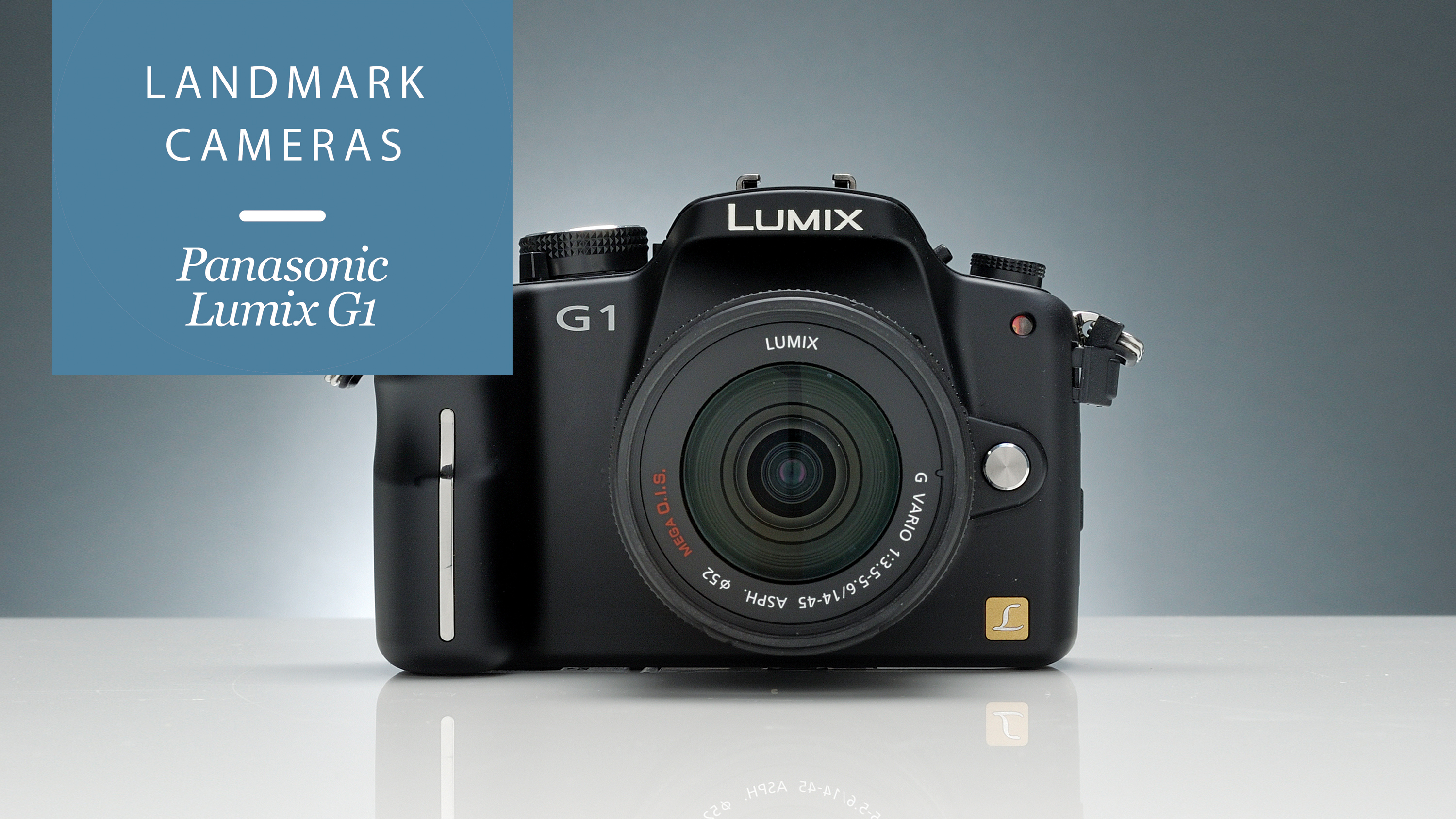Landmark cameras: Panasonic Lumix G1

Panasonic has now made more Micro Four Thirds mirrorless camera models that we can count, but the one that started it all of was the Lumix DMC-G1 back in 2008.
We take mirrorless cameras for granted now, but this was a major technological leap back then, when DSLRs ruled the earth and digital electronic viewfinders had so far only been seen in the compact camera market.
Until now, the only mirrorless interchangeable lens cameras had been niche products like the Epson R-D1 and Leica M8 rangefinder cameras, but here was a small, affordable interchangeable lens camera for enthusiasts that ditched the DSLR mirror mechanism and with it a good deal of weight and bulk of DSLRs of the time. The Lumix G1 was the very first modern-day mirrorless camera.
But while the design was new, the sensor actually wasn't. The original Four Thirds format was introduced jointly by Panasonic and Olympus way back in 2002, but it was used as part of mirror-based camera designs that made little headway against established brands, not least because of the smaller sensor format.
But 2008 marked an inspired design and marketing shift. The Four Thirds system was rebranded as Micro Four Thirds and was now mirrorless. And perhaps by virtue of hitting the market first, Panasonic and Olympus have maintained a strong position in the mirrorless market ever since.
What were the specs?
By today's standards, the Panasonic G1's specifications look pretty tame. The Micro Four Thirds sensor measures 17.3 x 13mm, which gives it about half the area of an APS-C sensor – but that's still a major step up from the tiny sensors used in smartphones and most compacts.
The G1's resolution of 12.1MP would be greeted with howls of laughter today, but actually that was pretty good in 2008. In the same year, Canon introduced the 12.2MP EOS Rebel XSi / EOS 450D and Nikon brought out the 12.2MP D90. In 2008, 12 megapixels was where it was at.
Get daily insight, inspiration and deals in your inbox
Sign up for breaking news, reviews, opinion, top tech deals, and more.
You could get higher megapixel counts from full frame cameras like the Canon EOS 5D Mark II, Nikon D3X and Sony A900, but in the affordable enthusiasts market, the G1's resolution was very competitive.
The EVF had a resolution of 1.44 million dots – not much by today's standards, but quite impressive for a digital viewfinder back then.
The autofocus system was contrast-based with 23 AF zones but, possibly as a result of the smaller sensor size and lighter lenses, it felt very snappy even in direct comparison with DSLRs of the time.
With an ISO range of 100-3200, the G1 was never a low-light specialist, though, and the smaller sensor size put it at a disadvantage compared to APS-C cameras, and that high-ISO performance difference persists to this day.
The rear 3-inch screen had a resolution of 460,000 pixels and was fully articulating – an astonishing leap compared to DSLRs of the time, while the EVF had a resolution of 1.44 million dots – not much by today's standards, but quite impressive for a digital viewfinder back then.

The mirrorless design brought big savings in size and weight. The G1's body measured 124 x 84 x 45mm and weighed just 380g, while its 14-45mm f/3.6-5.6 kit lens (28-90mm equivalent) weighed just 195g. On the downside, the maximum continuous shooting speed was just 3fps and there was – amazingly – no video mode. Panasonic's cameras have brought huge increases in speed and performance since then!
You also got lumbered with a battery life of 330 shots, which we now realise is pretty much what we must expect from the average mirrorless camera, but back then it caused some grumbling.
What made it so special?
We can look back now and think that the Lumix G1's specs look pretty tame, and back then it was such a new idea that photographers raised on a diet of clunky, lumpy DSLRs and little else hardly knew what to make of it, so the reaction was more muted than perhaps the camera deserved.
But with the hindsight of history we can see that the Panasonic Lumix G1 was a breakthrough. Here was a mirrorless camera that did what a DSLR did and more, thanks to that articulating rear screen and permanent live view. It was small, light, precise and rather well put together – all those things we've especially come to appreciate in the generations of mirrorless cameras that have followed.
It's the camera that made photographers and camera makers realise what a mirrorless camera system could do, and even though the G1 was long gone by the time mirrorless photography gained proper momentum, it deserves to be remembered as the camera that made us all sit up and taken notice of mirrorless technology.

Rod is an independent photographer and photography journalist with more than 30 years' experience. He's previously worked as Head of Testing for Future’s photography magazines, including Digital Camera, N-Photo, PhotoPlus, Professional Photography, Photography Week and Practical Photoshop, and as Reviews Editor on Digital Camera World.